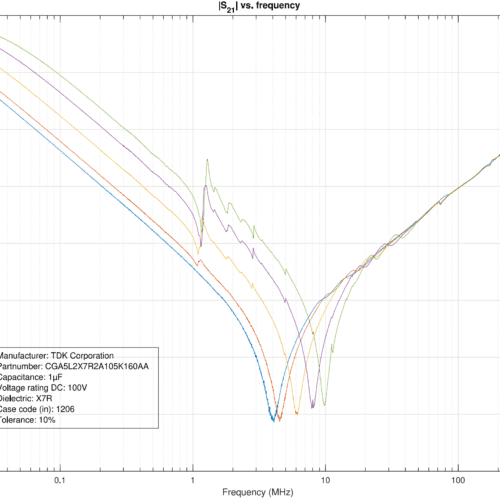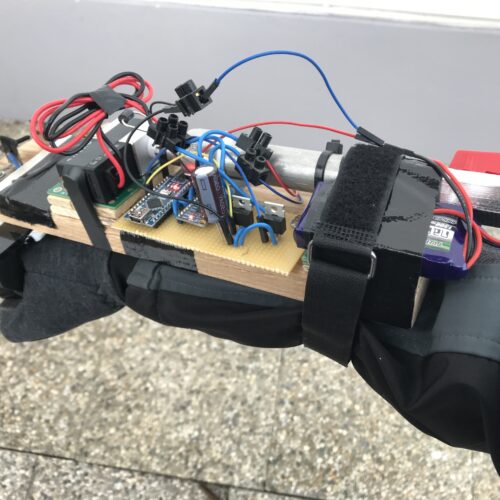Some of the most commonly used methods in (automotive) QM.
Crisply presented.
This post (STRG+F your way to your desired part of it) is like a personal expanding notebook to myself, where I compile information about various methods from different sources and experiences. I’m happy and grateful for any input. The focus lays definitely on APQP as one can certainly recognize.
APQP (Advanced Product Quality Planning)
APQP stands for Advanced Product Quality Planning, and it is a process used by companies to ensure that their products meet customer requirements and are of high quality. It involves planning and managing the development of new products from design to production, including risk assessment, design reviews, and testing. The goal of APQP is to catch potential problems early and avoid quality issues before the product reaches the customer.
The five (or six) phases
APQP is an agile method, the phases mentioned below overlap. Different teams can work on different phases in parallel, like everywhere, communication is key.
Phase 0: The mighty enquiry
The enquiry may be of internal or external origin, e.g. the management or another department of our own company or a completely different company who wants our company to develop and manufacture their product.
At least in the case of an external enquiry, the main actor in this phase is the sales team. The rest of the project team has a supporting role, e.g. answering questions regarding technical feasibility and estimating efforts.
Some things should be considered right away upon receiving an enquiry:
- Does the product fall into our business area and the strategic orientation of the company?
- Is the order attractive to process in the first place?
- Will we make a sufficient profit (or profit at all) out of the product while still remaining competitive?
Processing enquiries costs time and money for which the customer does not pay (yet). Therefore, only letting through the promising ones is advisable.
- Expected sales figures or profit margin too low
- Different business area (“I’m afraid, we make electronic subsystems for toy cars, not real cars”)
- Different strategic orientation (“I’m afraid, we decided to omit IC engines from our product range in the near future”)
- Market situation: Competitors already offer a very similar product for a very competitive price
If the enquiry is still in the race, more information should be gathered, if not already available, such as
- Requirements of the product, specifications, sketches, …
- Expected time frame
- Spatial restrictions, e.g. the printed circuit board should be placed inside a cars’ door with mounting holes on already fixed locations
- What’s the expected volume of the production? Are any special certifications (e.g. ISO 26262) required?
After sufficient information is gathered, the enquiry is presented to the engineering teams. A concept regarding design and possible technical implementation is being worked out in order to be able to estimate the technical effort and costs.
It is important at this point to fully analyse and clearly understand the requirements of the customer. Misjudgements can become quite expensive, especially if they surface late. Documentation is key.
The draft of the concept should be sufficient to estimate the costs, therefore including a BOM, necessary investments and so on.
The next step is to make a draft schedule on how long it will approximately take to develop the product and get the production up to speed. Evaluate the cost per product depending on quantity, staff costs, validation costs, costs for testing equipment, sampling expenses and so on.
You want to make sure that everything stated in the offer is correct such as agreed prices and terms of delivery, packaging, available production volume, requirements that can be fulfilled and requirements that can not be fulfilled. Before finally sending the offer to the customer, ROI calculations are made and presented to the big boss (top management), which then gives the final approval. Or not.
Phase 1: Planning
So basically, once the sales team secures the deal (in case of an external customer), the sceptre is handed over to the project management.
As always, you start off with a meeting. A project kick-off meeting to be precise. Important conditions such as schedule, budget, quality and resources are further discussed. The project is formally assigned to the respective project team(s). The draft schedule is converted to a final schedule. It might be a good idea to create a separate schedule with a little buffer for the customer in order not to have to explain every little delay right away. However, mind the milestones.
Phase 1 is concluded with a quality gate, the final project planning is presented to the management.
Phase 2: Product Design and Development
During the design stage, draft concepts will be refined into more final designs incorporating further methods such as D-FMEA. However, you want that design to be suitable for mass production, therefore close communication to the process developer is crucial.
D-FMEA helps to identify weaknesses early on and adequate countermeasures are put in place as a result.
A design verification plan (DVP) and a process verification plan (PVP) are created based on the customer requirements, FMEA and so on. Furthermore, the prototypes are tested using e.g. temperature cycling, vibration testing, general functionality and endurance tests. The resulting data is used to improve the design and make it successive more robust and better.
Prototypes must be built to perform the mentioned tests on. Good documentation is again key.
Once the development is finished, a design freeze is put in place. Theoretically, no changes in the product should be made any more. Any change will cost a significant amount of money now since the processes for volume production are already established. It is time to decide what parts of the product or modules of the product can be manufactured in house and which ones are bought from suppliers.
Phase 2 is concluded with a quality gate, the results are presented to the management.
Phase 3: Process Design and Development
This phase is about developing the manufacturing process for the final product. It is determined if the available manufacturing equipment is sufficient for the production of the new product and so on. P-FMEA helps to identify weakness in the process related environment. A control plan ensures proper procedures during production and to minimize errors. The MSA plan on the other hand deals with the required measurement equipment to measure the characteristics of the product. Another point is the required training of the staff on the possibly new production equipment and the product itself. Don’t forget logistics and packaging. Pre-series launch, meaning a lower amount of the product are produced, tested and shipped which still acts as test run and is strongly accompanied by the project team to get everything up to speed.
Phase 3 is concluded with a quality gate, the results are presented to the management.
Phase 4: Product and Process Validation
In this phase, we make sure that the process and the manufactured products fulfil the specifications required by the customer (validation). General goal is to approve the used process equipment as soon as it could be verified that the product requirements are met. This could happen still at the supplier’s site and later on the own manufacturing line, if there is any. A similar process is done for external parts you buy from suppliers. As soon as some samples manufactured under volume production conditions are found to fulfil all requirements, they are approved.
Before the validation of the process can be done, the tools must be approved, no changes should be done any more and staff should be sufficiently trained and instructed. Validation is then performed based on the plans made in phase 2 as the overall goal is to validate that all product requirements are met.
Phase 5: Feedback, Assessment and Improvement
Ideally, the customer approves the samples immediately, pays and we can ramp up production. The original project team now just watches and supports the manufacturing team if necessary. The number of pieces requested from the customer should be monitored closely, if they are lower than expected you may want to negotiate again. Finished projects should be able to focus on new projects, so a clean handover is necessary. Reflection on difficulties encountered during the project should be done to not make the same mistakes in other projects.
5 Why
Pinpoint the problem by asking “Why?” repeatedly until the root cause for the problem is found. Implement the solution and see if the problem persists or not.
Some examples:
Problem: A smartphone won’t turn on.
- Why? – The battery is dead.
- Why? – The battery wasn’t charged.
- Why? – The charger wasn’t working.
- Why? – The charger cable was frayed and not making a connection.
- Why? – The cable was frayed because it was frequently wound too tightly, causing strain on the wires inside.
Problem: A switched mode power supply is delivering an unstable output voltage.
- Why is the switched mode power supply delivering an unstable output voltage? – The feedback loop circuit is not properly controlling the switching of the power supply.
- Why is the feedback loop circuit not properly controlling the switching of the power supply? – The error amplifier in the feedback loop is not functioning correctly.
- Why is the error amplifier not functioning correctly? – The error amplifier is not receiving the correct reference voltage.
- Why is the error amplifier not receiving the correct reference voltage? – The reference voltage source is not providing a stable voltage.
- Why is the reference voltage source not providing a stable voltage? – The reference voltage source is not properly bypassed, causing it to be affected by high-frequency noise generated by the switching of the power supply.
It’s a simple method to investigate errors, however it depends on the know-how of the people involved. After successfully identifying the cause of the problem, measures should be put in place to prevent the same from happening again. This is of course easier done during product development or early testing than on a product returned by the customer.
FMEA
FMEA, or Failure Modes and Effects Analysis, is a tool used to identify potential problems that could occur in a product or process, and evaluate the potential impact of those problems. The goal of FMEA is to prevent problems from happening in the first place, by anticipating and addressing potential failure modes before they occur.
In simple terms, FMEA involves brainstorming a list of all the ways a product or process could fail, evaluating the potential consequences of each failure, and coming up with ways to reduce the likelihood or impact of each failure. By doing this, FMEA helps companies ensure that their products and processes are as reliable and effective as possible, before they are released to the market.
The risk score is determined by multiplying three factors together: the severity (S), occurrence (O), and detection (D) ratings.
- Severity (S) rating: This is a numerical rating that reflects the potential impact of a failure mode on the end-user or customer. The severity rating typically ranges from 1 (minimal impact) to 10 (catastrophic impact).
- Occurrence (O) rating: This is a numerical rating that reflects the likelihood of the failure mode occurring. The occurrence rating typically ranges from 1 (very unlikely) to 10 (almost certain).
- Detection (D) rating: This is a numerical rating that reflects the likelihood of detecting the failure mode before it reaches the customer. The detection rating typically ranges from 1 (very easy to detect) to 10 (almost impossible to detect).
RPN = S x O x D
The resulting RPN number (1-1000) provides an overall indication of the risk associated with each failure mode, allowing companies to prioritize their efforts and focus on addressing the most significant risks first. Scores beyond 125 are usually prioritized and once these have been treated, the lower scores will get some attention. Scores beyond 300 should be avoided.
Ishikawa
Also known as a Fishbone diagram or a Cause-and-Effect diagram, is a simple but powerful tool used to help identify and understand the possible causes of a particular problem. It is often to help find root causes of defects, deviations, or problems, and to develop effective solutions.
The Ishikawa diagram is shaped like a fishbone and consists of a central line that represents the problem being investigated, and several branches that represent the possible causes of the problem. The branches can be further broken down into sub-branches that represent more detailed causes. The 5 why method is very well suited for this matter.
Step 1: Define the problem that you want to investigate. Make sure you have a clear understanding of what the problem is, and what you want to achieve by finding its root causes.
Step 2: Time to start brainstorming possible causes. This can be done as a team, with each person contributing their own ideas. To get started, simply write the problem at the head of the Ishikawa diagram and start listing possible causes as branches coming off of the main line.
Step 3: It can be helpful to group similar causes together and categorize them. For example, you might have a category for “human factors,” which includes causes related to people, and a category for “equipment factors,” which includes causes related to machines or equipment.
Step 4: Once you have identified and categorized the possible causes of the problem, it’s time to evaluate and prioritize them. This can be done by using metrics such as frequency of occurrence, impact on quality, or cost of correction. Prioritizing the causes will help you focus your efforts on the most significant contributors to the problem.
Step 5: Implement solutions The final step is to implement solutions to address the root causes of the problem. This may involve making changes to processes, equipment, or training programs, or implementing new quality control measures.
Benefits of using an Ishikawa diagram
- Improved problem-solving: The Ishikawa diagram helps you organize and visualize the possible causes of a problem in a clear and structured manner, making it easier to identify root causes and find effective solutions.
- Better teamwork: The Ishikawa diagram encourages teamwork and collaboration by involving multiple stakeholders in the problem-solving process.
- Increased efficiency: By identifying and addressing root causes of problems, the Ishikawa diagram can help you improve efficiency and reduce waste in your processes.
- Improved quality: By finding and addressing root causes of defects and deviations, the Ishikawa diagram can help you improve the overall quality of your products and services.




